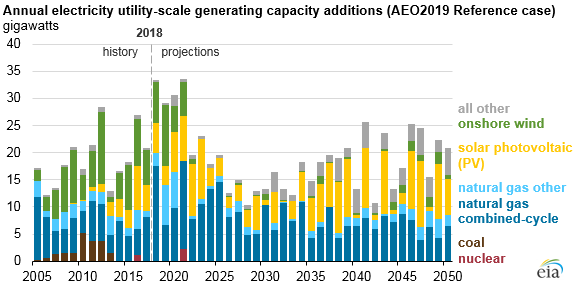Don’t Believe the Wind Industry’s Steel Tariff Talk, They Always Wanted More Subsidies
For the last few years the wind industry has claimed that it is now cost competitive with traditional sources of power and that it no longer needs the federal Production Tax Credit, a lucrative taxpayer subsidy given to the wind industry.
However, the American Wind Energy Association (AWEA), the lobbying association for the wind industry, has changed its tune and is now claiming that the steel tariffs enacted by the Trump administration are causing such a large increase to the cost of wind that the industry needs more taxpayer money, according to Bloomberg:
“Less than a year after the U.S. wind industry swore off federal tax credits, its top lobbyist wants another go at the incentive that helped it become the cheapest source of new energy in much of the world.
The tax credits are now needed for the industry to maintain its cost advantage against competing sources such as solar and natural gas plants. That’s because President Donald Trump’s import tariffs on steel and other wind-farm components have raised costs by as much as 28%, said Tom Kiernan, chief executive officer of the Washington-based American Wind Energy Association.
Kiernan said at a conference in New York that he will lobby for the investment tax credit for both onshore and offshore wind to ‘‘have parity’’ with the U.S. solar industry.
I was surprised,” Rachel Shifman, an analyst at BloombergNEF, said in an interview. “The sentiment I’ve heard is that they were ready to be done with it and finance projects the way the rest of the world does.”
The claim that the steel tariffs are the main reason the wind industry is looking for more subsidies strains credibility because according to research from New Energy Update, the steel tariffs could raise the Levelized Cost of Energy (LCOE) for new wind and solar projects by 3 to 5 percent.
While this is not insignificant, it also isn’t huge.
Unsubsidized wind in Minnesota costs between $38 to $48 per megawatt hour (MWh), based on Bloomberg New Energy Finance’s low-end estimate, and American Experiment’s own LCOE study in Doubling Down on Failure.
At a 3 percent increase in LCOE due to the steel tariff, the cost would range from $39.14 to $49.44 per MWh, and at 5 percent it would increase the LCOE of new wind to $39.90 and $50.40 per MWh. This increase in cost is minuscule compared to the loss of the PTC, which generates $24 per MWh for ten years after a wind project has been put into service.
Because wind contracts are often for 20 years, independent power producers often spread the cost of the PTC out over 20 years when submitting their bids to sell electricity to utilities. As a result, BNEF estimates the subsidized cost of wind in Minnesota is $26 per MWh, or $12 less than the unsubsidized cost.
This means that the loss of the PTC ($12/MWh) is 10.6 to 6.3 times larger than the increase in cost that can be attributed to a 3 to 5 percent increase in low-end LCOE estimates due to the steel tariffs ($1.14 MWh and $1.90/MWh), respectfully. Therefore, the loss of taxpayer subsidies completely dwarfs the cost increases incurred by the tariffs.
This strongly suggests the wind industry’s attempt to pin the renewed call for subsidies on the steel tariffs is political pandering, rather than a legitimate grievance about trade policy. We know that liberal lawmakers are seeking #resist Trump, including his steel tariffs, and are also eager to push for economy-ruining policies like the Green New Deal, so it makes sense for the wind folks to blame Trump for their insatiable appetite for your money.
In my opinion, however, the industry never meant what it said about not needing the PTC in the first place because we’ve seen a dramatic decline in wind installations every single time the PTC has expired in the past, as you can see below. Wind installations have picked up since 2015 because that is the year Congress authorized a multi-year extension of the program, but this extension is about to phase out, resulting in a decline in wind installations moving forward.

The graph below is from the U.S. Energy Information Administration, and it shows projected build-outs for power plants of all different kinds from 2018 to 2050. You’ll note that projection for wind installations plummet after 2022, after production tax credits expire in the early 2020s.

In the end, it appears the steel tariffs (which I don’t agree with, by the way) are simply a convenient excuse for doing something they were probably going to do anyway, which is ask politicians to give them more of your money.